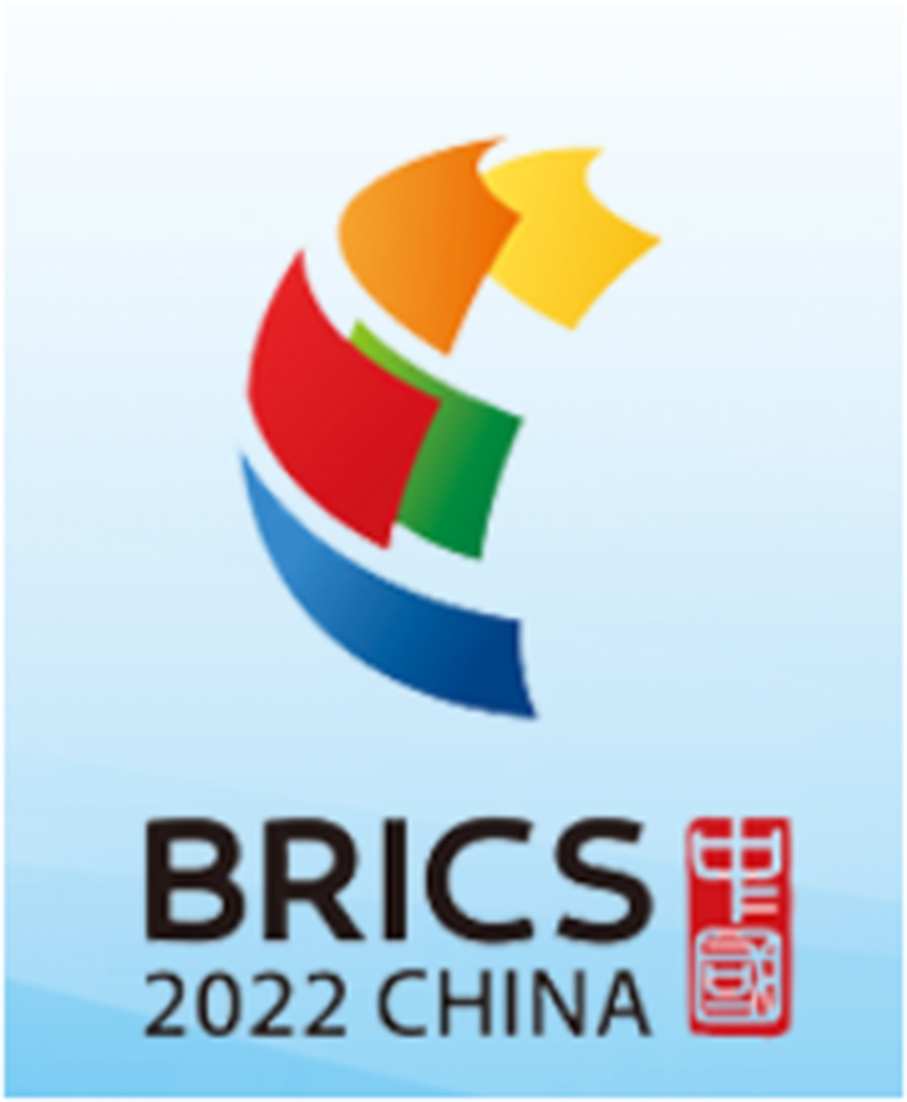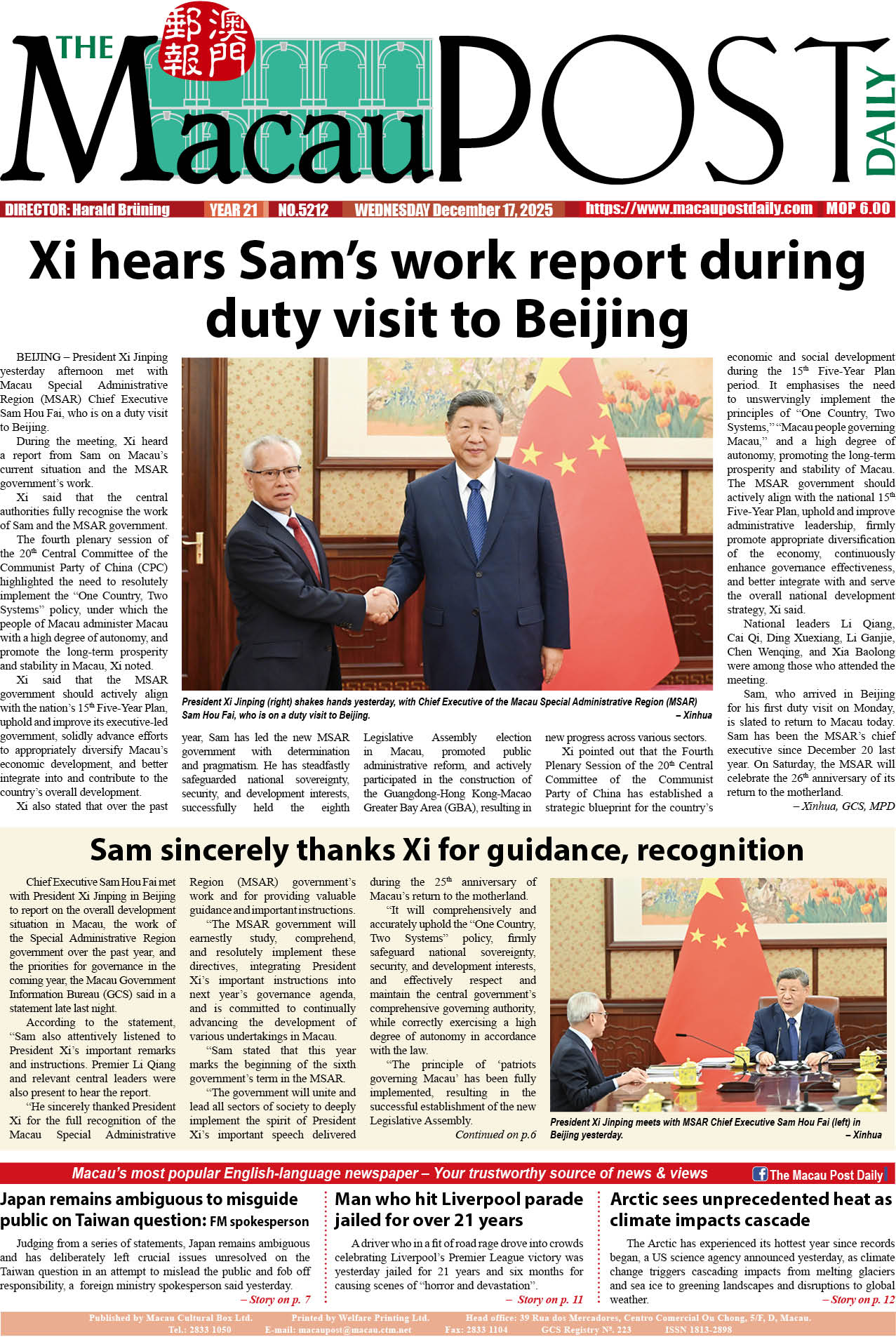Francisco Leandro, Associate Professor and Associate-Dean of the Institute for Research on Portuguese-speaking Countries – City University of Macau, China
BRICS is a beam of light in the context of an alternative mode of financing for development, a platform for new patterns of South-South cooperation, a game changer in the North-South dialogue, as well as a balancing mechanism in the context of the construction of a fair economic global order.
The concept of “BRICS” was originally put forward by Jim O’Neill, the economist in Goldman Sachs. In his research paper, he suggested that the future of the world’s economy laid in the emerging market countries, and among them, the most promising ones were Brazil, Russia, India and China. O’Neill thus coined the acronym “BRICs” with the first letter of the names of the four countries, which is a homophone of the English word “bricks”. BRICS was no more than an investment concept at the very beginning and it did not really catch too much international attention. Indeed, the BRICS mechanism began with the meeting of the BRIC Ministers of Foreign Affairs on the sidelines of the UN General Assembly in 2006. In 2009, it was upgraded to summit level to be hosted once a year. By the end of 2022, the BRICS leaders have convened 14 formal meetings, three of them using the online format.
In 2009, the 1st BRICs Summit was held in Yekaterinburg - Russia, meaning that the pure investment idea was then converted into a multilateral cooperation mechanism. In April 2010, the BRIC leaders convened the 2nd BRICs Summit in Brasilia – Brazil. The agenda items covered the international situation, international and regional hotspot issues, the international financial crisis, BRIC cooperation, G20 affairs, climate change and UN reform. In April 2011, South Africa participated, for the first time, in the 3rd BRICS Summit held in Sanya - China. The theme is "Broad Vision, Shared Prosperity", and the agenda items covered the international situation, international economy and finance, development issues and BRICS cooperation. Therefore, “BRICs” with a small letter “s” thus changed into “BRICS” with a capital letter “S”. In March 2012, the BRICS leaders convened the 4th BRICS Summit in New Delhi - India, under the theme of "BRICS Partnership for Global Stability, Security and Prosperity", with agenda items including global governance and sustainable development.
In March 2013, the BRICS leaders convened the 5th BRICS Summit in Durban - South Africa, under the theme of "BRICS and Africa: Partnership for Development, Integration and Industrialization". This summit also opened a new door for a dialogue between the BRICS leaders and the African leaders. In July 2014, the BRICS leaders convened the 6th BRICS Summit in Fortaleza - Brazil, under the theme of "Inclusive Growth: Sustainable Solutions", with agenda items covering political coordination, sustainable development and inclusive growth.
In July 2015, the BRICS leaders convened the 7th BRICS Summit in Ufa - Russia, under the theme of "BRICS Partnership–a Powerful Factor of Global Development", with agenda items including international political and economic issues and BRICS cooperation. In October 2016, the group convened the 8th BRICS Summit in Goa – India, under the theme of "Building Responsive, Inclusive, and Collective Solutions". The agenda items covered the international political and economic situation, global governance, agriculture and BRICS cooperation. On the sidelines of the summit, the BRICS leaders had a dialogue with the member state leaders of the Bay of Bengal Initiative for Multi-Sectoral Technical and Economic Cooperation (BIMSTEC).
In September 2017, the group convened the 9th BRICS Summit in Xiamen - China, under the theme of "BRICS: Stronger Partnership for a Brighter Future". The agenda items covered international political and economic situation, global governance, sustainable development and BRICS cooperation. In July 2018, the 10th BRICS Summit took place in Johannesburg - South Africa, under the theme of "BRICS in Africa: Collaboration for Inclusive Growth and Shared Prosperity in the Fourth Industrial Revolution". In November 2019, the 11th BRICS Summit was organized in Brasilia - Brazil, under the theme of "BRICS: Economic Growth for an Innovative Future". During the summit, BRICS leaders jointly attended the closing ceremony of the Business Forum and held closed-door meetings, open meetings and dialogue sessions with the Business Council and the New Development Bank. In November 2020, the 12th BRICS Summit took place via live video link and was organized by Russia. The central theme was "BRICS Partnership for Global Stability, Shared Security, and Innovative Growth". The agenda items covered BRICS cooperation in combating COVID-19, international and regional situations, and global economic governance. In September 2021, the 13th BRICS Summit was organized by India via video link under the theme of " BRICS@15: Intra BRICS cooperation for continuity, consolidation, and consensus". The agenda items covered further cooperation in combating COVID-19, promoting pragmatic cooperation and addressing global and regional hotspot issues. In 2022, the 14th BRICS Summit, chaired by China, has capitalized on the continuous expansion of the working areas, putting again in the center of the South-South debate the fight against poverty and the innovation for sustainability, in the context of the SDG and the United Nations 2030 Agenda for Sustainable Development.
After 14 formal meetings and a number of side talks, what can we learn from this initiative? Indeed, there have been many skepticisms about or even criticisms against the BRICS mechanism. After all, the combination of these five countries seems quite unusual. The five member states are dispersed geographically. Their economies are in different development stages. Discrepancies in ideology are seen. There are even border or trade frictions between some member states. Obviously, it is reasonable to doubt whether there is a logic that can support the coming together of the BRICS countries. However, the practice in the last decade proves that, the mechanism has not collapsed due to those differences. Instead, the cooperation between the BRICS countries has been turning in-depth and diversified over time. BRICS is a typical case of promoting South-South cooperation and North-South dialogue. Its internal mechanism and external interaction with other states or organizations gives inspiration to multilateral cooperation and the global order.
The internal cooperative mechanism of the BRICS brings reflections on the relationship between ideology, political system and international cooperation. According to traditional international relations doctrine, it is believed that alliance and cooperation are normally seen between states of similar ideology and political system. Discrepancies in ideology are seen between the BRICS countries, and their political systems are not the same. But the first decade of BRICS has seen cooperation in various aspects, convergence has been achieved, and relationship has been deepened. In the financial aspect, the BRICS countries established the New Development Bank (NDB), providing infrastructure financing for member states and other emerging market economies and developing countries. In the healthcare aspect, the health ministerial annual meeting has already been institutionalized, practical topics and issues are widely discussed in the annual meetings, and the BRICS countries’ initiatives are taken into consideration seriously by the WHO as the representing voice of the developing countries in general. In the agricultural aspect, Brazil, as a large agricultural producer in the world, takes the lead in the agricultural cooperative development among the BRICS countries. These are all examples of the BRICS cooperation regardless the ideological and political differences. Conflicts exist and are inevitable. But the BRICS countries choose to make companion instead of alliance. Therefore, they restrain themselves from intervening other members’ internal affairs, and try to find the “greatest common factor” among them. They walk together on a mutually beneficial and win-win path. This new pattern of international and multilateral relationship is worth to be further investigated.
The background of the BRICS cooperation mechanism was the 2007-2008 global financial crisis. The crisis showed the major problem of the existing global governance practice – the insufficient voice and representation of developing countries on the global stage. The BRICS mechanism is seen as an attempt by emerging developing economies to participate in global governance. For example, all the BRICS countries are members of the G20. The BRICS leaders have formed an unofficial practice of meeting up right before the G20 Summit, so as to achieve convergence in major issues. They try to stand on a common ground in the G20 Summit, and fight for rights of the developing countries. Taking the global financial governance as an example, the BRICS countries pushed the reforms of the IMF and the World Bank. Though the result of the reforms were not so satisfactory, but it was at least the start of a change. The voice of the BRICS countries is also heard in the field of global security governance. All the five BRICS countries were members, either permanent or non-permanent, of the United Nation Security Council (UNSC) in 2011. They expressed their opinion on international security through their votes in the UNSC. BRICS countries questioned about the proposition of “the Responsibility to Protect”, and showed their opposition to military intervention in international affairs. It is true that the developed countries are still dominant in global governance. However, the BRICS countries have successfully made the world realize the fact that, the voice of developing countries can no longer be ignored.
After the first decade, the BRICS cooperation has already accomplished remarkable achievements. However, a deeper partnership and a long-term mechanism have to be built if the BRICS want to enhance their international influence. The NDB, the “BRICS+” model and the expansion of members are three significant directions for the future development.
1) The NDB is the main carrier of the BRICS mechanism. It turns a forum into an institution. The NDB is funded by the five BRICS member states in an equal manner, and all five members have an equal voting right and there is no one-vote veto. The NDB does not impose harsh conditions while providing infrastructure financing to the member states and other emerging market economies and developing countries. Internally, the NDB is a platform for a better integration of the resources of the BRICS countries, enlarging the effect of investments. Externally, the NDB brings the member states and other developing countries closer, and enables mutual development. At the same time, the NDB may become a complement to those present international financial institutions under the Bretton Woods system, thus, is possible to increase the voice of the BRICS in global governance;
2) The “BRICS +” model was introduced in the 2017 BRICS Summit held in Xiamen, China. It means that the BRICS countries should expand their “friends circle”, and cooperate with other countries, especially developing countries. It is true that the international influence of the BRICS countries has already been significant, but under the haze of the trade war and the financial war, it may be a wise choice to turn the BRICS mechanism into an open platform to forge regional cooperation across continents, in which the BRICS countries have a leading role. The model is not only beneficial to the trade and economic development of the countries, it may also help to build a better world order, in which it is possible for the emerging developing countries to compete and coexist on an equal footing with the traditional developed ones;
3) 2022 is the right time to talk about the rise of the BRICS in the global economy, bearing in mind that since 2017, China has proposed to start the BRICS expansion process. This process is still exploring the criteria and procedures, and gradually form a consensus, which stands as the expansion rationale. Despite of unconfirmed information, United Arab Emirates, Saudi Arabia, Egypt, Nigeria, Senegal, Kazakhstan, Indonesia, Argentina, and Thailand, are among possible new members, covering Africa, Middle East, South America, Central and South Asia.
All in all, the role and current BRICS contribution is noteworthy to the global economy in terms of population (40%), GDP (25% nominal and US$ 16.039 trillion), land coverage (30%), world trade (18%), and global forex (US$ 4 trillion) . Since its inception, the BRICS worked on sectoral cooperation in many areas, namely – science and technology, trade promotion and facilitation, banking, investment, energy, health, education, health, innovation, security, agriculture, and fight against transnational crime. Currently, sectoral cooperation accounts for more than 30 subject areas – In all these areas, the organization has adopted a global vision. All these reasons allow us to anticipate that BRICS would not exist without China and its existence and foreseen enlargement holds the potential to steering global development into a new Era.
* This article is new version of another published in the Newspaper Platform on 26 July 2019, co-authored with Leong Sok Man Yolanda (Ph.D.).
[2]Iqbal, B.(2021). BRICS as a Driver of Global Economic Growth and Development. Global Journal of Emerging Markets. https://doi.org/10.1177/09749101211067096. Retrieved in June 2022 from https://journals.sagepub.com/doi/full/10.1177/09749101211067096









